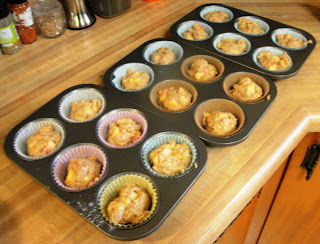Apples are one of my all time favorite fruits. My favorite apple recipes allow the fruit to shine through, and this one does just that. This is a simple, homemade, delicious, vegan dessert that even the kids will love. Mine definitely did.
Apple Tart
Ingredients
9 in Pie or Tart Crust:
2 tablespoons coconut oil
2 tablespoons vegetable shortening
3 tablespoons superfine sugar
1 tablespoon corn starch
2 tablespoons almond or rice milk
1 teaspoon vanilla extract
1/4 cup whole wheat flour
3/4 cup all purpose flour
1/2 teaspoon baking powder
1/2 teaspoon baking soda
1/4 teaspoon salt
Filling:
1 cup French style apple butter (recipe below)
OR 1/2 cup natural apple sauce and 1/2 cup apple butter
1 Fugi or other large eating apple
In a medium bowl, cream together coconut oil, vegetable shortening, and sugar. Sift in cornstarch, flours, soda, powder, and salt. Add milk and vanilla and mix together all ingredients until incorporated. Form into a ball, wrap in wax paper or plastic wrap, and refrigerate for at least 2 hours. The dough will hold fine for up to 36 hours in this manner. When you are ready to roll out the dough, remove from the refrigerator 5 to 10 minutes ahead of time.
This dough is best if rolled out between layers of wax or parchment paper. Take a 24 inch length of wax paper and fold it in half. Place dough between layers of the paper. To start the flattening process, you will need to pound the dough a few times with the rolling pin, flip over, and pound a few more times. The dough ball will crack, but you can push it back together to seal cracks as you roll it out. After you get the dough flattened some, roll out into a circle by turning dough 1/8 of a turn between passes with the rolling pin. Roll the dough until it is about 1/2 in thick.
Place your tart or pie pan on dough to measure for size. A correctly sized dough will be slightly larger all the way around the pan when viewed from above.
Using the wax paper to help with the transfer, move the dough into the pan and fit it to the pan's shape.
Add the 1 cup of apple butter (or apple sauce and butter mixture) to the unbaked shell and place it in the refrigerator to chill while preparing the other steps.
While the dough rests in the refrigerator, prepare the apply by quartering, coring, and slicing it into 1/4 inch thick slices.
Remove pan from refrigerator and arrange slices in an overlapping pattern on the top of the apple butter. Return to refrigerator to chill.
Heat your oven to 375 degrees. If you are using a pan with a removable bottom, place it onto a baking sheet to help prevent accidentally pushing the bottom through. Bake the tart for about 30 minutes, until the edges of the crust and apples are golden brown. Allow to cool for 30 minutes before slicing.
Note: If you use the apple sauce and butter mixture I list above, your tart will be darker in color and have a cinnamon flavor. If you don't want the cinnamon and added sugar of the packaged apple butter, you can use natural apple sauce alone, but it will be soupy. As an alternative, you can cook down 1 1/2 cups natural apple sauce in a sauce pan on low for 20 to 30 minutes to make a thicker base for the tart. Cool fully before using in this recipe.
I have found this easiest to slice this tart is with a pizza cutter. The rolling wheel keeps the slices of apple from wadding up in the same way it does with a knife. (I am also uncoordinated, so that might add to that whole issue.)
Drum roll please: Your bonus recipe!
French Apple Butter
Ingredients
1 tablespoon canola or other light tasting vegetable oil
8 to 10 medium cooking apples, such as Johna Gold or Sun Crisp (about 3 lbs)
1/4 cup granulated sugar
1/2 cup water
Peel, quarter, and core the apples. Heat oil in the bottom of a heavy dutch oven or other stock pot on medium heat. Cook the apples in the oil for 5 to 10 minutes, until they take on a lightly golden color. Add the water and granulated sugar and stir well. Reduce the heat to low and cover. Let it simmer until the apples break down and most of the water is cooked off (2 to 3 hours), stirring occasionally. When it is finished cooking, let the butter cool to room temperature and move to containers for storage. Freeze for up to one year, or refrigerate for up to 10 days.

The small amount of fat in this recipe gives it a smooth, silky texture that very much reminds me of actual butter. I was making mine this summer when the local orchard had a buy one get one sale on bag of apples. I portioned mine into containers that held 1 to 1 1/2 cups each and froze most of the batches. This is delicious in the above tart recipe as well as on bread, biscuits, crackers, etc. I have had the batch that I used for the pictured tart for about 6 months, and it is showing no signs of freezer burn. As there are no preservatives, it will grown mold in the refrigerator after two weeks, so be aware.





















